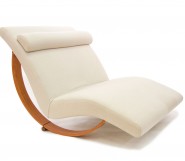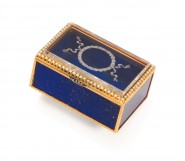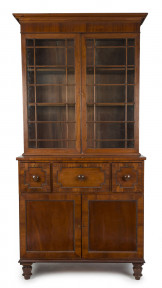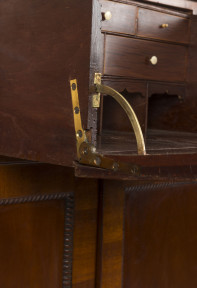Lot #538 - An early and important Colonial Australian secretaire bookcase, Hobart origin, circa 1825
-
Auction House:Leski Auctions
-
Sale Name:Australian & Historical
-
Sale Date:25 Jun 2022 ~ 10am (AEST) - Session 1: Lots 1 - 769
26 Jun 2022 ~ 10am (AEST) - Session 2: Lots 770 - 1491 -
Lot #:538
-
Lot Description:An early and important Colonial Australian secretaire bookcase, Hobart origin, circa 1825
Cedar and beefwood with pine secondary timbers. A stunning example with finely moulded Grecian pediment, cross-banded in fine straight veneers of cedar onto King William pine, over a pair of finely moulded and glazed doors, of ‘Tartan’ or Edinburgh margin light form. The doors with finely mitred corners and two original shelves. The base similarly cross-banded, over three large drawers, of typically Edinburgh form, cock-beaded with Southern Tasmanian casuarina cross-banding, original blackwood knobs and central fall-front secretaire drawer. The secretaire interior is original and veneered with Southern Tasmanian casuarina, huon pine stringing and the remains of original whalebone knobs. The doors are similarly cross-banded, with fine inset reel or ‘knulled’ decoration. Original turned feet. (Repolished finish & some replaced glass panes. Three whale ivory knobs partially restored).
253cm high, 124cm wide, 57cm deep -
Provenance:The Barclay family, by descent, ‘Hendrewen’, 326 Macquarie St, Hobart; Private Collection.
-
Notes:Tasmanian early Colonial period furniture that is veneered with casuarina is extremely rare. Here it has been used as a feature to the secretaire drawer and cross-banding. The presence of King William pine and blackwood knobs affirms the Tasmanian, rather than NSW origin. The few related examples known point to the same, as yet unknown Scottish cabinet maker, sometimes working in a variety of native timbers. It is likely that this secretaire was made in Hobart, between 1825 and 1830. After the arrival of Governor George Arthur in 1823, the local lumber yards, (Sarah Island, Launceston, Hobarton, New Norfolk) saw an increase in use, engagement by government, timber species naming / application, and thence, the local making of veneered high quality furniture. This was to increase with the attendant increase in investment, migration and the number of ex-convicts choosing to remain in Van Diemen’s Land, either as free cabinet makers or as clients, largely as a result of Governor Arthur’s promotion. During the time of Arthur’s administration (1823 – 1837) the engagement of convict and free artisans was encouraged, and the use of native timbers was proposed (as in the 1829 John Archer designed villa Heathfield – Davey St.), extensive architect designed public works (and en-suite furniture), as opposed to the use of imported timbers. After Arthur’s departure in 1837, large quantities of imported English pattern-book furniture were advertised in the local press, with the local manufacturers tending, with rare exceptions, to be more of English / London pattern-book forms & - even worse – cedar veneered with mahogany/ rosewood / walnut. John Hawkins was the first to clearly identify the influence of Scots cabinet making at this time in Tasmania – specifically, this type of glazing in his “Irish and Scottish Cabinet Makers and their influence over Australian Colonial Furniture in Sydney and Hobart before 1840”, as Edinburgh in origin, and identified as a vernacular type, as described in the Edinburgh Cabinet and Maker’s Books of Prices 1805 – 1825. Secretaire bookcases of this quality and scale are virtually unknown in Tasmania at this time. Fitted libraries occur after 1831 and pattern-book examples from c.1840. Related Tasmanian Governor Arthur period secretaire bookcases: 1. A simpler, non-veneered, (though nicely patinated) cedar secretaire bookcase, with Edinburgh margin light glazing, formerly in the collection of Ginger Morris of Hobart & Sydney; illustrated in Fahy, Simpson & Simpson “Nineteenth Century Australian Furniture”, 1985. 2. A very closely related example in the collection of the National Gallery of Australia. Compare the mitred corners to the upper doors, secretaire and cock-bead edge to the secretaire drawer, cupboards beneath, on tall turned feet and identical back panelling. The present secretaire, with its casuarina cross-banding and whale ivory knobs, casuarina interior, and inset reel mouldings to doors and drawers, is suggested as equal, if not finer than that example in the NGA, and second only to the Butler examples, of NSW origin. With minor careful work to the finish, the present secretaire would be the finest Governor Arthur period Tasmanian secretaire bookcase for a collector or institution. Essay by Warwick Oakman B. Des. (Hons)
-
Estimate:A$30,000 - 50,000
-
Realised Price:$0.00
-
Category:Furniture
This Sale has been held and this item is no longer available. Details are provided for information purposes only.















